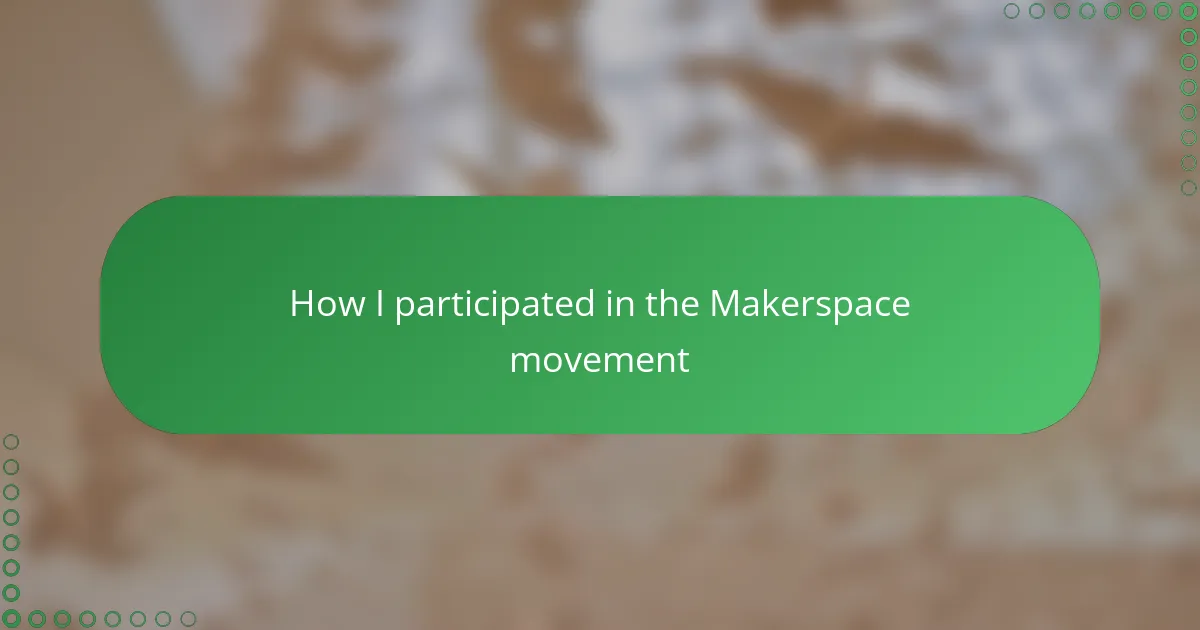Key takeaways
- Handmade paper crafts offer a unique connection to creativity and individual expression, making each project one-of-a-kind.
- Makerspaces foster community and collaboration, providing an inclusive environment for shared learning and exploration.
- Basic techniques in paper crafting, such as cutting, scoring, and layering, enhance the artistic potential and depth of projects.
- Joining a Makerspace community encourages experimentation and resilience, transforming mistakes into valuable learning experiences.

Introduction to Handmade Paper Crafts
Handmade paper crafts have always fascinated me because they combine creativity with a tangible, textured beauty you just can’t find in mass-produced items. Have you ever held a piece of paper and felt like it tells a story just by its fibers and imperfections? That’s what draws me in every time I start a new project.
Working with handmade paper feels like connecting with the very essence of creativity—it’s raw, authentic, and full of potential. The process is soothing and satisfying, almost meditative, turning simple materials into pieces of art that carry a personal touch. This hands-on experience gives me a unique appreciation for the craft that goes beyond just making something pretty.
What’s truly magical is how each sheet holds its own personality, making every craft project one-of-a-kind. I often find myself getting lost in the textures and colors, wondering about the journey they’ve had from pulp to paper, and how that story enhances the final creation. Isn’t that what art should do—make us feel something deeper than the surface?
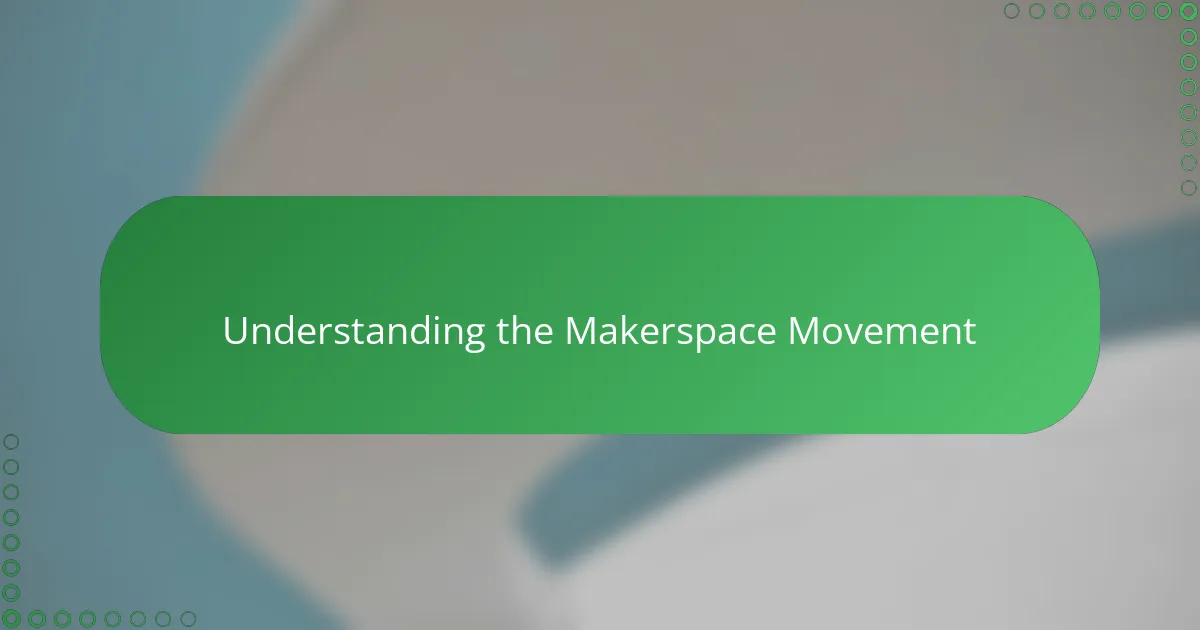
Understanding the Makerspace Movement
The Makerspace movement, to me, is like a creative playground where people bring diverse skills and ideas together. Have you ever walked into a room filled with tools, materials, and buzzing machines that invite you to experiment? That atmosphere of shared learning and open collaboration is the heart of what Makerspaces represent.
I’ve found that Makerspaces aren’t just about having access to equipment—they’re communities built on curiosity and mutual support. In these spaces, there’s this unspoken energy that encourages you to try, fail, and try again without fear. It’s where innovation meets hands-on practice, which I think is exactly what handmade crafts, like paper making, thrive on.
What fascinates me is how Makerspaces democratize creativity by removing barriers. You don’t have to be an expert or own fancy tools to make something meaningful. This inclusive spirit resonates deeply with how I approach handmade paper crafts—embracing imperfection, learning as I go, and sharing that journey with others. Have you ever experienced a space that made you feel like your ideas truly belong? That, for me, sums up the essence of the Makerspace culture.
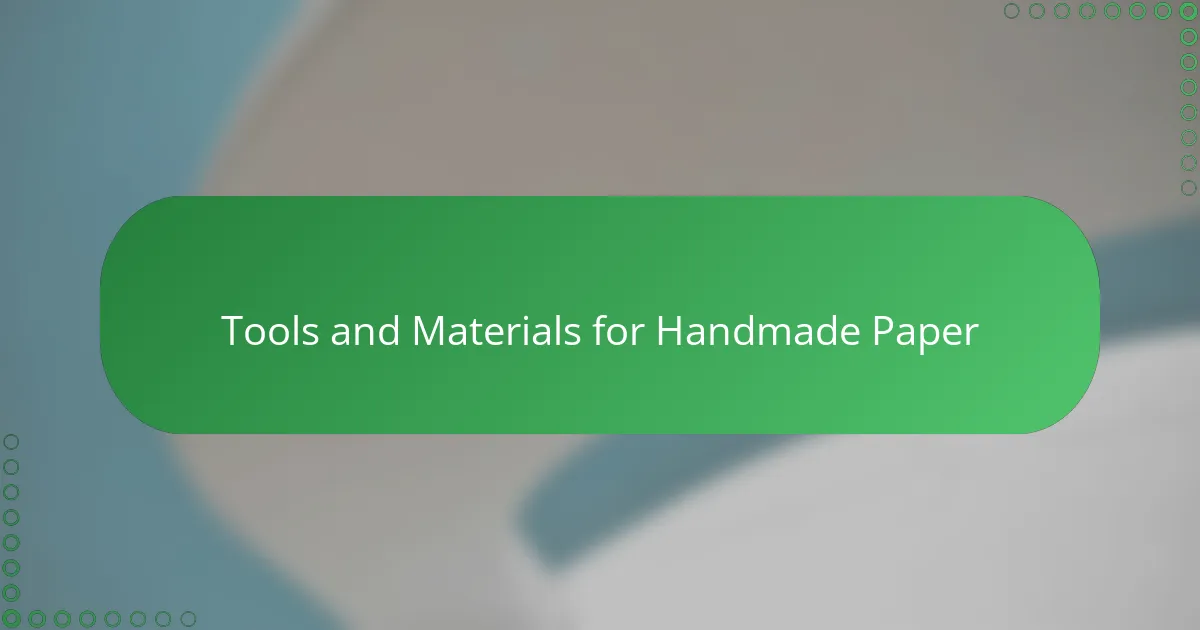
Tools and Materials for Handmade Paper
When I first gathered the tools for making handmade paper, it felt like assembling a tiny workshop filled with endless possibility. My essentials included a deckle and mold—the wooden frames that shape the paper—and a large basin to hold the pulp slurry. I quickly realized that having just the right scoop and a sponge to drain excess water made all the difference in achieving that perfect, textured sheet.
Using recycled paper scraps as my primary material added a satisfying eco-friendly twist. There’s something deeply rewarding in transforming discarded bits into fresh, fibrous pulp ready for a new life. Have you ever noticed how the quality of the fiber affects not just the texture but also the character of the finished paper? That tactile uniqueness keeps me coming back to experiment with different blends and finishes.
One thing I didn’t expect was how vital patience and a steady hand become when casting the sheets. The tools guide the process, but it’s the rhythm you find as you press, lift, and dry that shapes the final product. I’ve learned that even simple items like a rolling pin or blotting cloth can elevate the craft, turning the chaotic mess of pulp into delicate, artful paper.
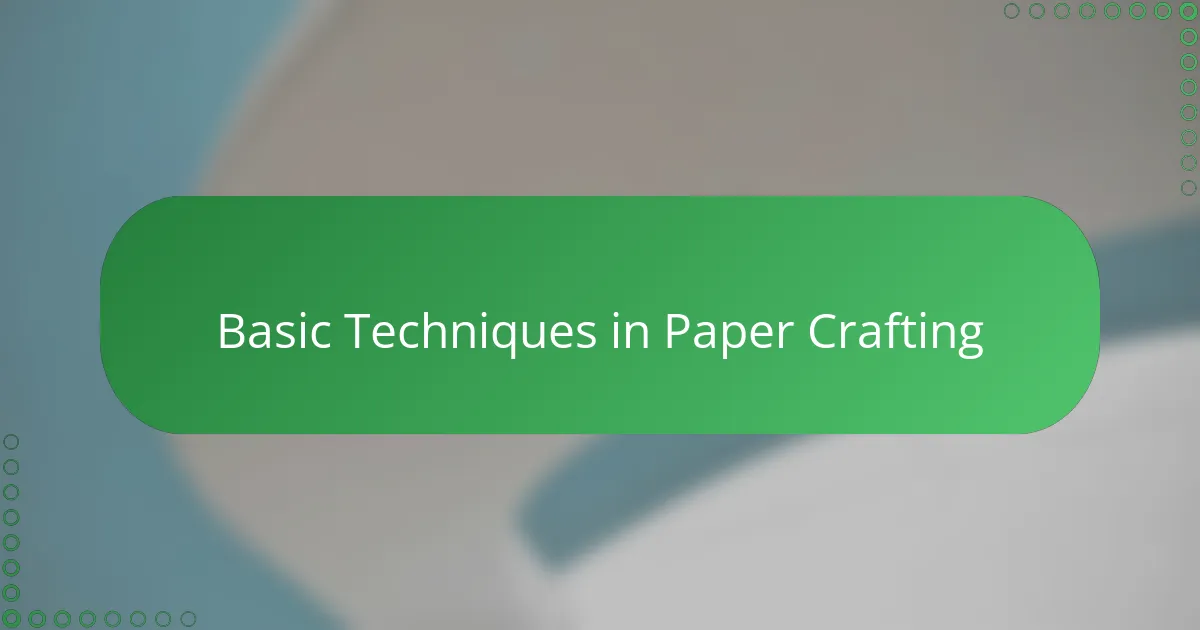
Basic Techniques in Paper Crafting
Mastering the basic techniques in paper crafting felt, at first, like learning a new language made of folds, cuts, and creases. Have you ever noticed how a simple fold can transform a flat sheet into a structure with depth and possibility? I remember my early projects where uneven folds taught me patience and precision more than any written guide could.
Cutting and scoring are fundamental steps that shape the paper’s personality before it even takes form. There’s a certain satisfaction in hearing the crisp sound of a clean cut or feeling the subtle indentation from scoring that guides the fold. Over time, these techniques became second nature, almost like a gentle conversation between my hands and the paper.
Then there’s layering—my go-to way to add dimension and surprise to a design. Combining textures and colors through careful gluing or folding layers creates an unexpected richness that feels almost magical. Do you feel that thrill when a simple stack of papers suddenly becomes something tactile and alive? That moment is why I keep coming back to these basic, yet endlessly rewarding, techniques.
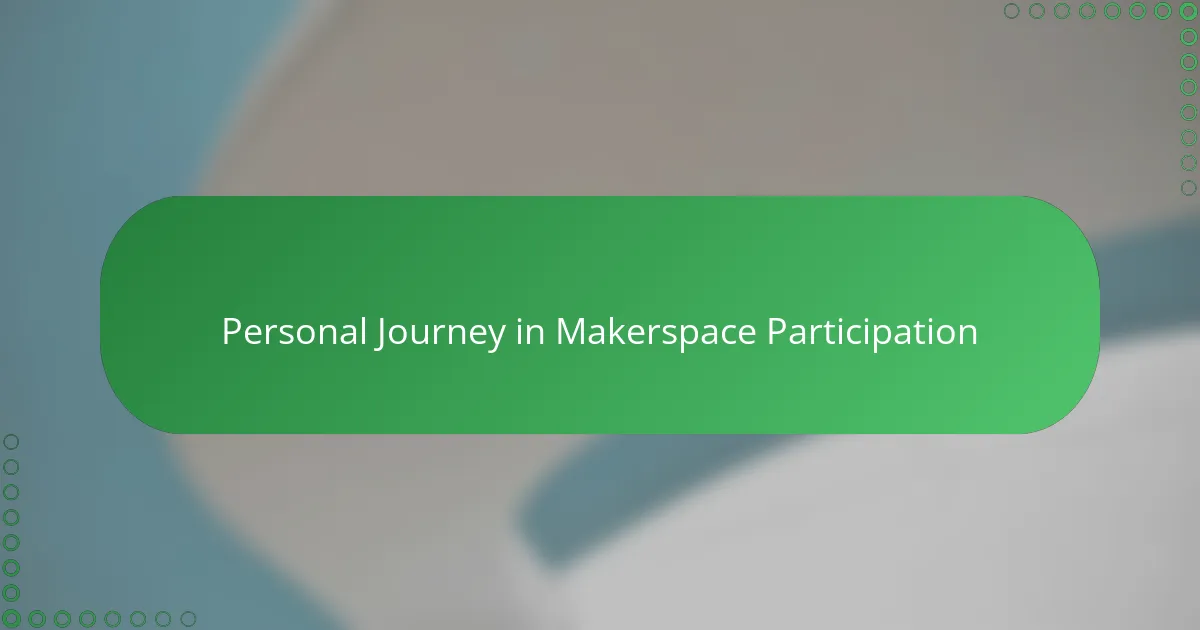
Personal Journey in Makerspace Participation
Stepping into the Makerspace for the first time was like entering a secret garden of creativity. I remember feeling both excited and a little overwhelmed by the variety of tools and fellow makers around me. Yet, there was this instant sense of belonging—as if my love for handmade paper was welcomed and understood in that shared space.
One moment that stands out was when I nervously tried my hand at a pulping machine while others watched and offered tips. That experience taught me more than just technique; it showed me the power of community and the joy of collaborative learning. Have you ever found that being surrounded by passion and support can turn a simple activity into something transformative?
Over time, I noticed how participating in the Makerspace movement shaped not just my craft but my mindset. The encouragement to experiment and embrace mistakes made me more adventurous with my paper textures and designs. It’s funny how a place dedicated to making can also quietly nurture confidence and resilience—I never expected a workshop to do that, but it certainly did for me.
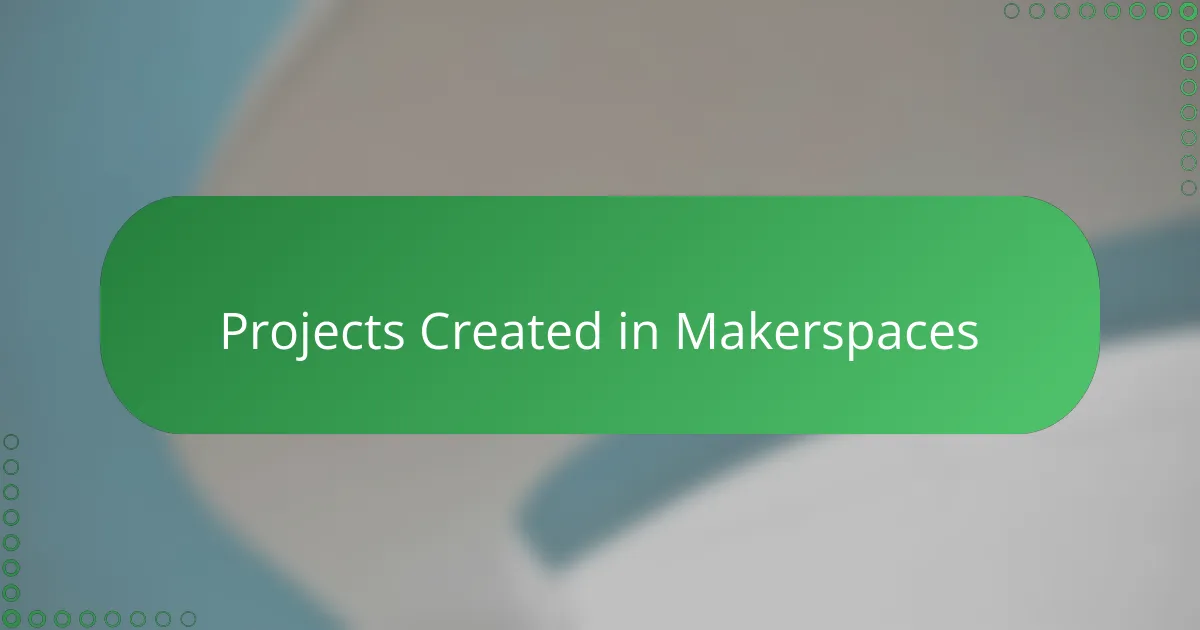
Projects Created in Makerspaces
Projects born in Makerspaces have this vibrant energy that I find irresistible. One time, I collaborated on a series of handmade paper journals, each page embedded with delicate pressed flowers sourced from the local community garden. Isn’t it amazing how combining simple natural elements in a shared space can create something so heartfelt and memorable?
I’ve also experimented with incorporating recycled fabrics and thread into my paper sheets, turning flat surfaces into textured canvases. There’s a real thrill in pushing the boundaries of traditional paper craft, and Makerspaces make that exploration feel less intimidating. Have you ever noticed how having access to tools—and people who inspire you—opens new doors in your creative process?
Sometimes, the projects start as humble prototypes—like my early attempts at papermaking sculptures inspired by organic shapes. Watching others gather around to offer feedback or share their own ideas turned those modest beginnings into collaborative artworks. That sense of collective creativity, in my experience, is one of the most rewarding parts of making in a Makerspace.
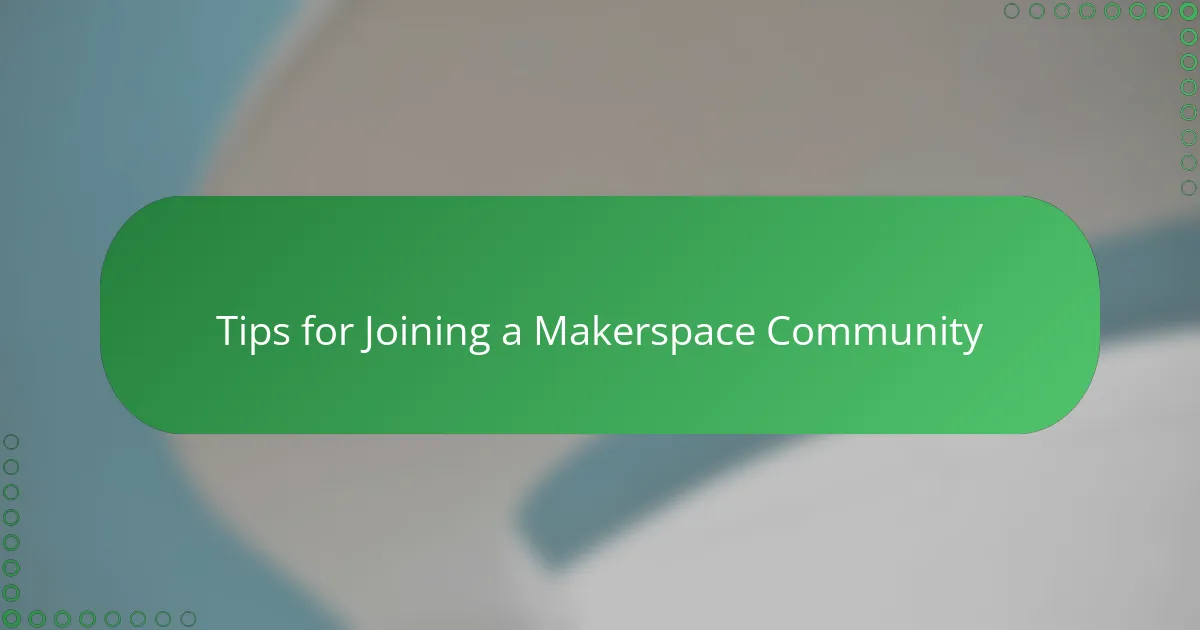
Tips for Joining a Makerspace Community
One thing I learned quickly is to show up with an open mind and a willingness to learn. I remember walking into my first Makerspace feeling unsure, but the friendly faces and shared curiosity made it easy to start asking questions. Have you ever noticed how a warm welcome can instantly dissolve doubts and spark your confidence?
Also, don’t hesitate to jump into group projects or workshops. I found that collaborating not only boosts your skills but also builds genuine connections with others who share your passion. There’s something special about exchanging ideas in real time that turns a simple craft session into a memorable experience.
Lastly, be patient with yourself—Makerspaces thrive on trial and error. I often remind myself that every mistake is just a step toward discovery, and the community is there to support that journey. What’s your favorite lesson learned from trying something new with others around? For me, it’s that growth happens when you’re not afraid to fail.
